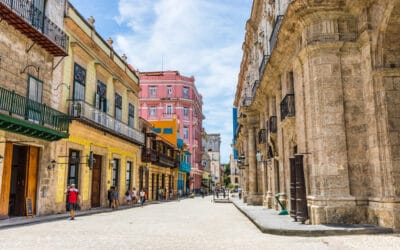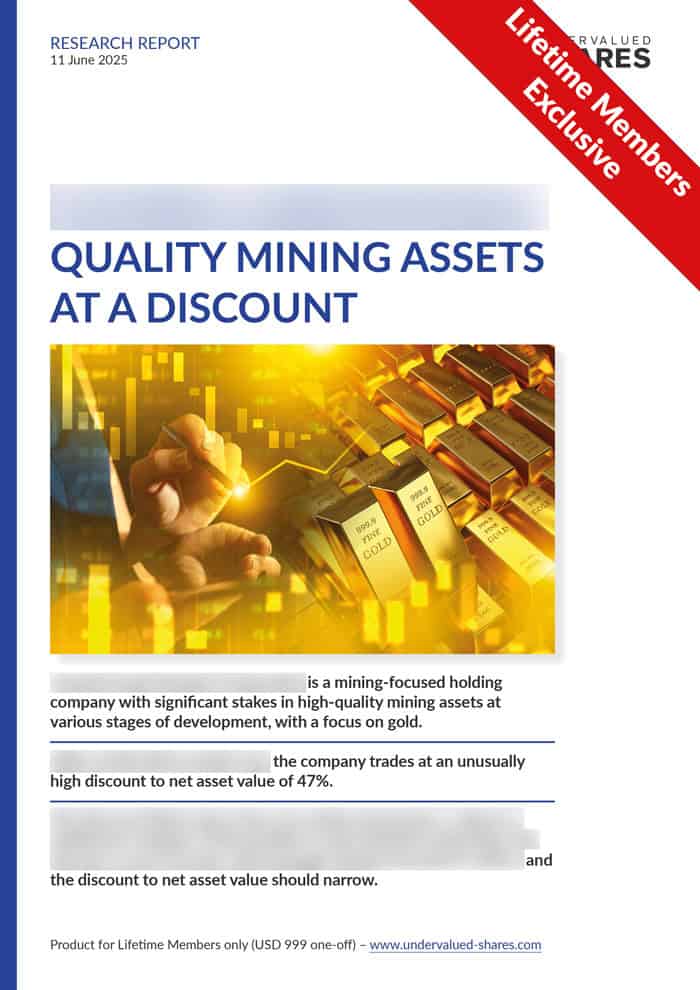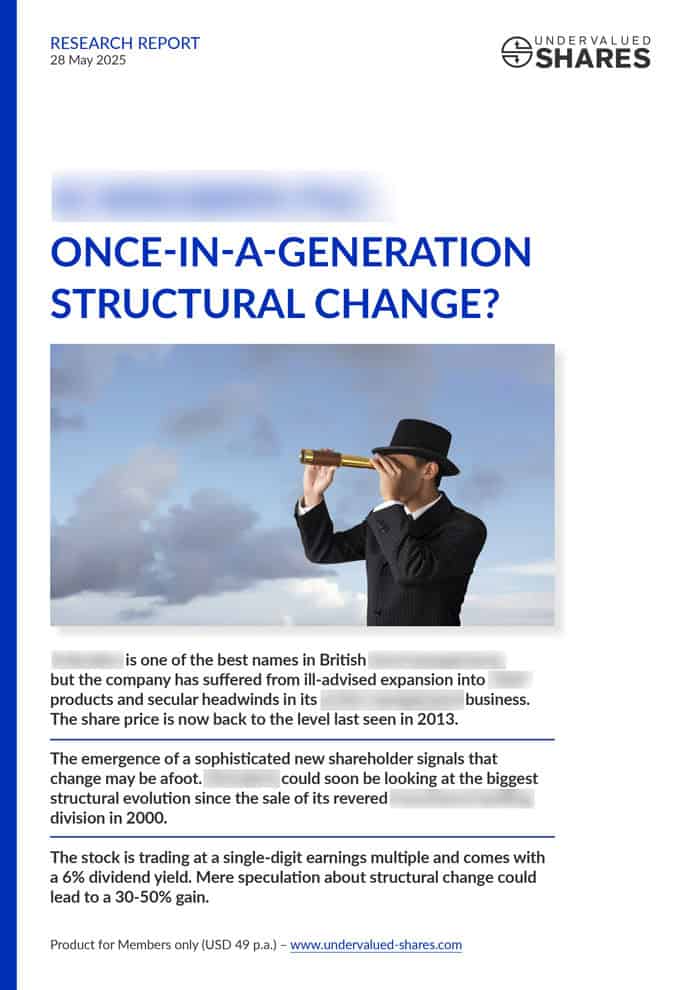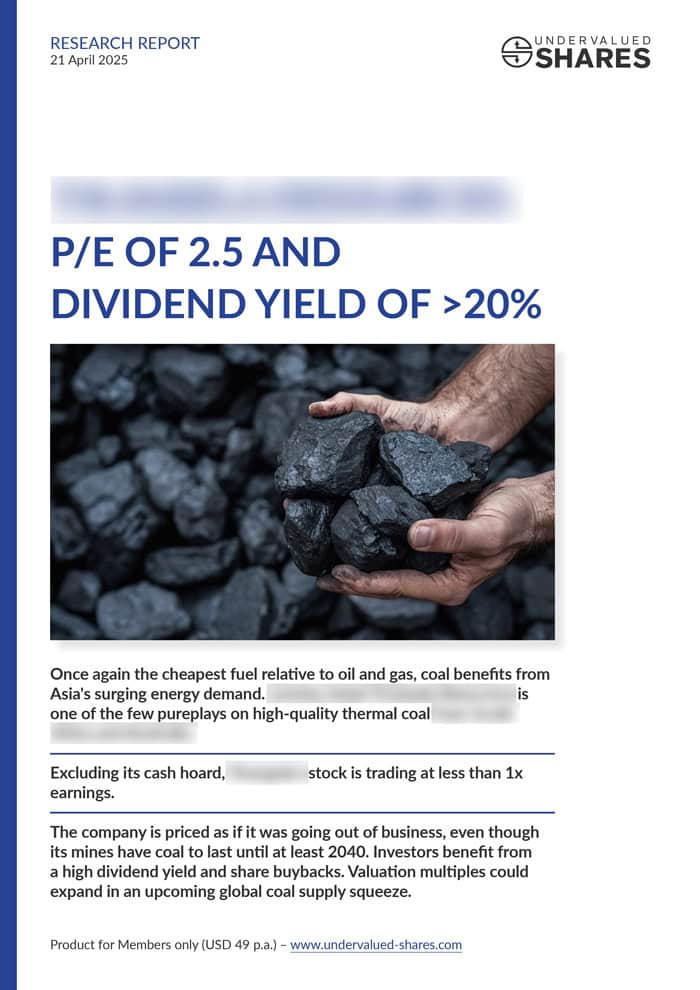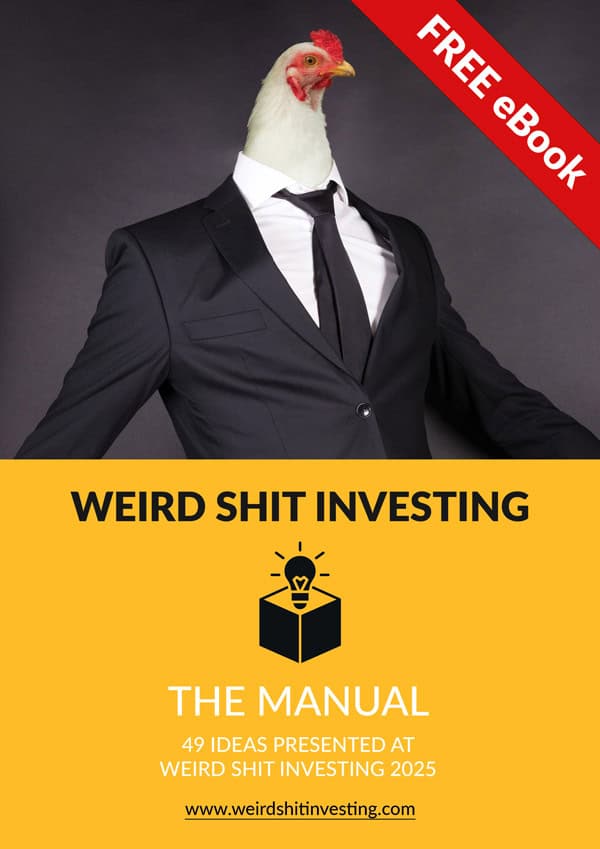Metals Exploration’s share price has gone vertical. What’s the key lesson, and which three stocks might be next?
Riches among ruins (part 3): Bougainville Copper, or the treasure island that won’t go away
When I look back at some of my older work, I am overcome with a mixture of pride and horror. Bougainville Copper (ISIN PG0008526520), an Australian company with activities in Papua New Guinea, ranks top among them.
In 2004 and 2008, respectively, I published two extensive reports about the company. These reports were, I humbly say, pretty epic for their time in terms of making hard-to-find information available to the public and providing in-depth analysis. Ever since, my name has been intricately linked to Bougainville Copper. As a German investor told me last year: "I still have a hardcopy version of these reports on my shelf!"
Equally, it's an investment that has produced more frustration and disappointment than anyone could have ever imagined. 16 years on, the company remains dormant and inactive. The stock had risen tenfold at one point and temporarily became worth AUD 1bn (USD 600m), but it's now back to where it was when I first reported about it. 16 years and 0% return. Though in the meantime, it's been extremely volatile, and on several occasions, short-term traders were able to reap major gains from the stock's wild swings.
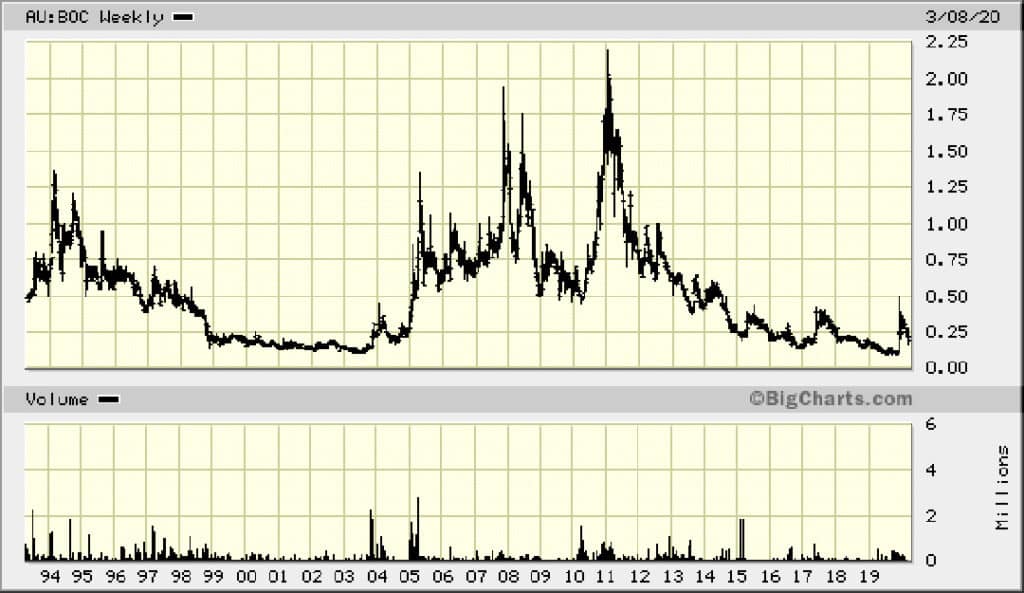
Three decades of hope and ever-recurring speculation.
Bougainville Copper, in case you didn't know, symbolises crisis investing more than probably any other publicly listed company:
- Its only asset, the giant "Panguna" copper mine in Papua New Guinea, caused an actual civil war which killed an estimated 15,000-30,000 people. The subsequent general misery probably contributed to an early demise of many more.
- The mine has been dormant since 1989, but it still contains copper and gold with an estimated worth of USD 60-84bn. The company itself is currently worth just AUD 80m (USD 50m). Based on a back-of-the-envelope calculation and assuming a USD 5bn investment for restarting the mine, Bougainville Copper stock could go up in value by 50 to 100 times. Few publicly listed companies offer as large a spread between the current market cap and the potential value if things get back to normal.
- Efforts to revive the company involved some of the strangest twists and tales anyone could have dreamt up. There was even an attempt to hire a private mercenary army to stage an invasion of the occupied mining territory. The army leader had received stock options – a 21st century approach to running a mercenary business! You can order a book that prominently features the "Sandline Affair", written by the military commander who led the ill-fated project.
I don't think there is any comparable company listed on a stock market anywhere. Bougainville Copper is a unique animal, which explains why several generations of investors have been fascinated by it.
By popular demand, here is an update based on the manifold recent developments.
The exotic island of superlatives
Bougainville is an island the size of Corsica, located in the Southern Pacific and forming part of Papua New Guinea.
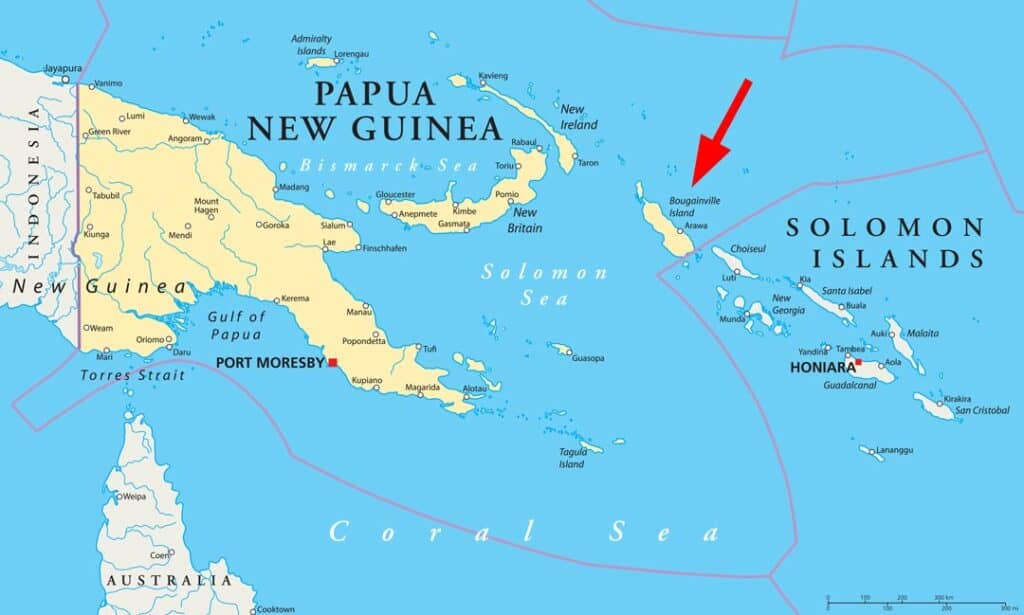
Bougainville is located on the western edge of Papua New Guinea.
During the 1960s, a large copper deposit was discovered in the mountainous interior of the island. The Australian mining giant, Rio Tinto, invested record amounts to start operating a combined copper and gold mine in 1972. During its operation, the mine produced an annual average of 175,000 tonnes of copper and 18 tonnes of gold.
One can't overstate how many superlatives the mine created, e.g.:
- World's largest copper deposit at the time it was discovered.
- World's largest copper mine at the time it started operation.
- Single-handedly contributed 44% of Papua New Guinea's export income.
Looking back at it from today's perspective, there were also a few record-breaking negatives:
- Just 1% of the mine's wealth creation ended up in the hands of the Bougainvilleans, who are ethnically separate from the rest of the Papua New Guinea population and felt they were getting screwed by the national government.
- Because of the relatively low concentration of copper, the environmental impact of the mining operation was huge. The mine required a heavy reliance on chemical processing of ore, and the toxic tailings were released straight into the local river system. Reportedly, the river bed is still coloured by toxic chemicals today, more than three decades after the operation ceased.
- The violent conflict that arose out of the mine's operation was to become the single-biggest military conflict in the Southern Pacific since the end of the Second World War.
In 1989, a local foreman and his co-conspirators stole 50 kilograms of dynamite from the mine's operation, which they used to blow up an electric pylon. Subsequent events spiralled out of control and led to a full-blown civil war. The mine stopped operating and the stock price gradually fell by over 90% over the coming five years, as hopes waned that the mine would ever be reopened.
For 31 years (and running), the Bougainville Copper stock has been a bet that the company would one day restart its operation in Bougainville. Peace negotiations, spikes in the copper price, and recurring media interest have all done their part in regularly causing a stock price rally.
Until now, however, the mine has remained closed and the rallies all proved temporary.
Two decades of delay and decay
In 2001, the key parties of the conflict agreed the following:
- Hostilities had to cease so that peace would be restored.
- The island of Bougainville would get to hold a referendum no later than 2020 on a potential increase of its autonomy or even full independence.
- To pay for the island's recovery, its natural resources should be considered carefully. The island also has potential in areas such as tourism and fisheries, but its copper and gold reserves were always going to be the low-hanging fruit
These parameters were the primary reasons for my 2004 analysis of the company. Everything seemed wonderfully logical and straightforward:
- The central government of Papua New Guinea had recognised that the Bougainvilleans had to be given some kind of increased self-governance.
- To get cash back into the coffers of the island's bankrupt local government, reopening the Panguna mine would be the obvious solution.
- The country of Papua New Guinea, the island of Bougainville, and the mining company would all benefit from such a solution. Win-win!
Little did I know of tropical island politics.
Peace was restored quite quickly. Skirmishes, road blocks and no-go zones near the mine persisted for many years, but the 2001 peace accord did bring the main conflict to an end. That was the easy part.
All subsequent steps were hamstrung by difficulties.
Even something as comparatively simple as holding a referendum among the island's 234,000 residents took an incredible 19 years to organise. Serious efforts to hold such a referendum did not get underway until 2017, while the actual referendum took place in 2019, just short of the 2020 deadline.
Given the ongoing uncertainty over the island's future governance model, nothing meaningful happened in the meantime. Bougainville's economy has most recently been based on fishing, agriculture, and (illegal) small-scale mining. The island's GDP is a mere USD 1,100 per head, and even holding the referendum required funding support from abroad.
Precious little has changed in Bougainville since 2001, and in some aspects the island has even fallen back further.
What did happen, though, was an effective pulling-out of Rio Tinto. The company that created the mine and tried to revive it for 27 years has effectively cut its ties with Bougainville – for now.
Bougainville Copper now has competitors – but it's still unique
When the mine was created, Rio Tinto decided to operate it under the helm of a separately listed company. Following its IPO, Bougainville Copper was publicly listed on the Australian Stock Exchange and majority-owned by Rio Tinto.
During the entire conflict and its aftermath, Rio Tinto declared that it was ready to negotiate financing and other terms for reopening the mine. During this entire period, the Australian mining giant took a lot of flak for its ongoing involvement in the Panguna mine. Besides ongoing bad PR, there were lawsuits, too.
In 2016, Rio Tinto threw in the towel – or at least, that's how it looked.
The company gifted 36.4% of the share capital of Bougainville Copper to the national government of Papua New Guinea, and an identical 36.4% to the residents of Bougainville. This reduced Rio Tinto's stake to zero.
Depending on who you ask, there are two different versions why this gift was made. Some say that Rio Tinto had had enough and wanted to draw a line under the entire matter. Others viewed it as a cunning political move to eventually get back into Panguna after all.
From 2010 onwards, other mining operators have started to develop an interest in the dormant Panguna mine and other exploration prospects on Bougainville. At last count, there were at least six parties with a serious interest in Bougainville:
- An unspecified Chinese consortium, which reportedly promised USD 1bn in investments for other sectors of the island's economy if it was granted mining rights.
- RTG Mining, a Toronto and Sydney-listed company which claims to have struck a deal with local authorities and now lays a claim to the Panguna mine. RTG is backed by an Australian billionaire family that has built mining operations in some of the world's most challenging locations. As one of their representatives told the media recently: "Some of the best opportunities in the mining business in the 21st century are now in the more difficult commercial environments." RTG believes the mine could be restarted in phases, and that it would only take USD 800m and 18 months to get parts of the old mine back into operation.
- Caballus Mining, a company controlled by an Australian businessman, has also claimed to be in negotiations for mining rights.
- Fortescue, the mining company controlled by the Australian billionaire, Andrew Forrester, has been poking around Bougainville but never claimed to have any rights (yet).
- Kalia, a tiny exploration company listed in Australia, claims to have two permits to explore in the northern tip of the island. It was Kalia's Australian geologist who got killed on the island last year.
That's besides Bougainville Copper itself, which still lays a claim to the dormant mine and affiliated exploration rights. The authorities of Bougainville revoked the company's rights in 2015 and they have been the subject of a lawsuit ever since.
Depending on who you ask, you'll get diametrically opposed views about Bougainville Copper's chances for getting back into Bougainville.
Some say that Bougainville Copper is the least likely candidate to win a mandate for reopening the mine, given its role in the island's history.
Others argue that the opposite will be true:
- Not letting Bougainville Copper return to the island could expose the country to expensive, time-consuming lawsuits.
- Its link to Rio Tinto could easily be revived, which would give the company access to any amount of financing required.
- Independent from who gets to operate the mine, it's an invasive, impactful operation because of the nature of open-pit mining. A link-up with Rio Tinto would get an operator with a proven track record in Environmental, Social and Governance ("ESG") standards and a strong interest in getting it right this time around. As the saying goes: better the devil you know.
Will the island's residents eventually realise that working with Rio Tinto represents the best option after all? Rio Tinto could easily regain a significant stake in Bougainville Copper by agreeing to an equity investment, which the company requires one way or another. It's better to be asked in than to try and force your way in.
If I had been involved in all this, I would have also gifted these shares to local players: "Call us if you need help. Else, good luck to you!"
Based on the recent development of the stock price, it seems that the market is taking a fairly similar view. Bougainville Copper may yet receive such a phone call.
The dormant company is back in play
When the first serious noises about a referendum emerged in 2017, the stock price temporarily rallied 150%.
It subsequently fell to a new all-time low during summer 2019. At a price of then AUD 0.09, it had lost 98% compared to its 1988 high of AUD 4.50. There was significant selling pressure at the time and you could have loaded up decent numbers of shares had you been daring enough to buy.
It would have been a good time to buy indeed.
In December 2019, the stock price shot up by 400% in the matter of just a few days. The referendum was held without too much trouble, and 98% of Bougainvilleans favoured independence.
The referendum's result spurred speculators back into action. Once more, the prospect of reopening the mine was making it into the financial media.
The market has been there before, though. Do investors realise just how complicated the entire situation has become in the meantime?
Bougainville's multi-billion-dollar question
Cool-headed, conservative observers of the entire matter will claim that anyone investing in Bougainville Copper shares must be borderline insane and delusional.
There is a long list of reasons NOT to invest:
- Bougainville Copper's legal claims to the mine are disputed. There are legitimate arguments for saying that the company no longer holds the license rights to the mine. The details are complex, and no one really knows for sure.
- Last year, a visiting geologist was killed on the island.
- Reopening the mine will require not only a hefty investment (whether USD 800m or USD 5bn), but also years of preparation. There is no quick win.
- Investors need to live with the ups and downs of the copper price.
- The Panguna mine has a low grade of copper, which makes it a difficult resource to exploit even with today's technology.
- Rio Tinto might have meant what it said when it gifted the shares to the government of Papua New Guinea and the island residents. The mining giant with the broadest know-how of the situation might not be willing to get involved again.
- 19 years of political conflicts have passed without any kind of clear decision. The general lack of progress and the glacial speed do not inspire confidence in local (or national) leaders.
- The 2019 referendum had advisory character only, and it does not legally bind Papua New Guinea to do anything. No one really knows how the island's political future looks like.
Bougainville is not even an emerging market, it's more of a near-medieval society with a bit of foreign-aid money sprinkled across it.
On the other hand, there is also a case for revisiting some of points of contention, many of which don't hold water once inspected more closely:
- Had Rio Tinto not agreed to invest in Bougainville in the 1960s, the independence of Papua New Guinea from its colonial power, Australia, might not have happened. Unintended consequences at a later stage aside, Rio Tinto's investment in a risky venture was originally seen as liberating many millions of people. It's not necessarily wise to judge these affairs based on today's values and standards.
- During the operation of the Panguna mine, "Bougainville had the highest life expectancy of any PNG province (at 59.6 years compared to the national average of 49.6 years); the lowest infant mortality (33 deaths per 1,000 live births compared to the national average of 72); and the second lowest proportion of the population without any schooling (at 50.1 percent compared to the national average of 78.0 per cent)." (source: National Research Institute, Papua New Guinea)
- The conflict was also rooted in the Bougainvilleans' feeling that their ethnic belonging is more closely tied to the neighbouring Solomon Islands than Papua New Guinea. It wasn't Rio Tinto, though, that drew these borders. One can't blame it all on the mining company, convenient as that may be.
If viewed from a rational perspective, the course of action should still be clear: negotiate the reopening of the mine in a collaboration between Bougainville Copper, Rio Tinto, the island residents and the government of Papua New Guinea. If the simple solution cannot be made to work, it's doubtful anything else will ever play out to the favour of the Bougainvilleans. In Bougainville, even simple is difficult enough.
But the same could have been said in 2004 already.
My own life experience, too, has made me more sceptical. Having spent four years living in the Galapagos Islands where I rescued the island's largest private employer from an existential crisis, I have gained my own set of insights into island politics, island conflicts, and island irrationality. These experiences took place in a comparatively developed country (Ecuador), in a jurisdiction that has had its own special legislation since 1998, and where international support is comparatively plentiful. I dare not imagine how much harder an operating environment Papua New Guinea and Bougainville would be.
With that in mind, count me among the sceptics, at least as far as actually reopening the mine is concerned. I have learned my lessons in this regard.
None of which is to say that I wouldn't expect another few rounds of speculation and volatility. When I finished this article, the Bougainville Copper stock price rallied 23% in an otherwise weak market. There is life left in them old bones.
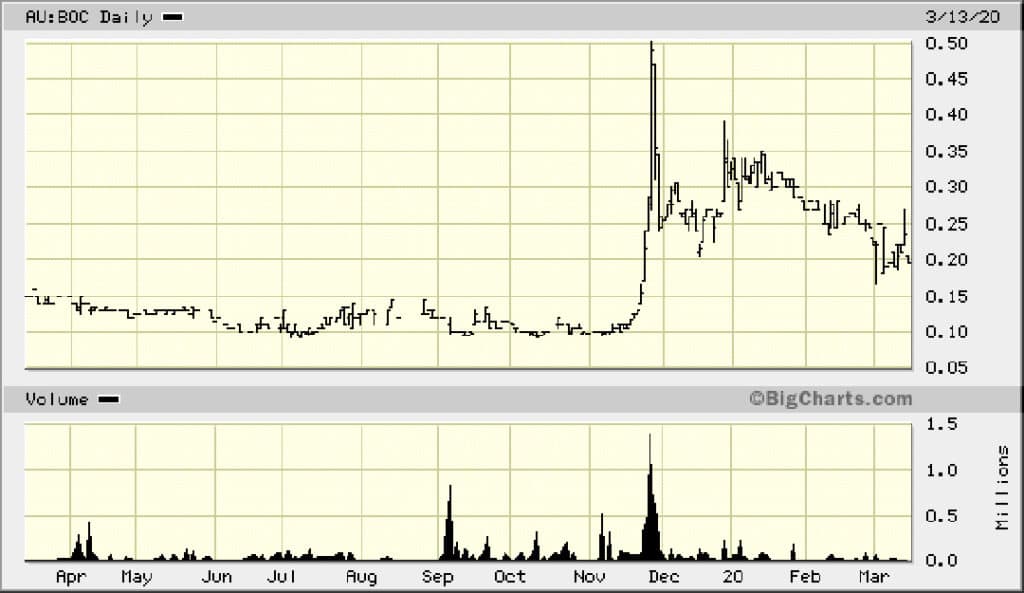
The referendum provided a shot in the arm of Bougainville Copper shareholders.
As far as its recurring hopes for a revival are concerned, Bougainville Copper will probably continue to deliver.
In December 2019 and January 2020, Bougainville Copper had major write-ups in the Financial Times, Forbes, Bloomberg, Reuters, NPR, the Sydney Morning Herald, and a variety of specialty publications such as The Diplomat and Mining.com (these links all go to specific articles). It's no surprise that the stock price went into overdrive mode. Check back on my description of the media-driven "hype machine", which I published as part of last week's dispatch.
The best-working formula for Bougainville Copper has so far been: buy when things look absolutely hopeless and depressing, and sell whenever you see the usual raft of mainstream media players reporting about the story.
Trading at AUD 0.20 right now, the stock has come back significantly since its December 2019 run-up, but it's still far off its summer 2019 lows. It's probably worth checking back in 6, 12 or 24 months to check if the price has come down again to a level that suggests total, utter hopelessness. When that's the case, it might be worth picking them up as another punt. Until then, I'd stay on the sidelines.
Blog series: Riches among ruins
There's more to "Riches among ruins" than this Weekly Dispatch. Check out my other articles of this three-part blog series.
Did you find this article useful and enjoyable? If you want to read my next articles right when they come out, please sign up to my email list.
Share this post:
Get ahead of the crowd with my investment ideas!
Become a Member (just $49 a year!) and unlock:
- 10 extensive research reports per year
- Archive with all past research reports
- Updates on previous research reports
- 2 special publications per year


